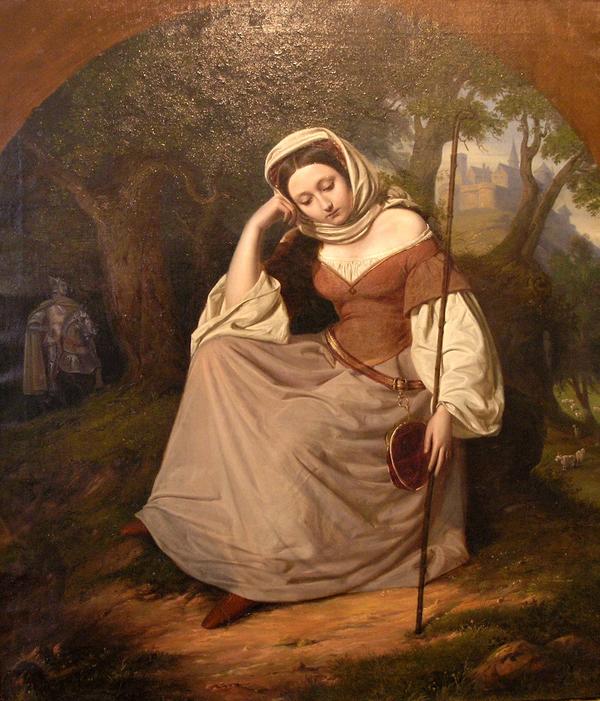The 19th-century German painter Carl Staël von Holstein worked in the lyrical genre of pastoral.
This genre (from the Latin “pastoralis”) originated in the art of the 16th century. It focused on the stylized image of natural life. The artists of the genre contrasted the aimless existence of city-dwellers with the peasant life depicted in an idyllic manner. During the Baroque and Rococo periods the pastoral reached the peak of its popularity. In Romanticism, pastoral paintings, embodying the high spiritual value of man and the charm of rural life, came back into fashion. The works of this period invariably featured a didactic historical context incorporated into landscapes.
The industrial revolution of the 19th century drove people away from the farms and the countryside. The growing protest of painters against Enlightenment philosophy found its expression in the Romantic direction of art. Nostalgia for the village idyll and nature was once again firmly ingrained in the genres of painting. Pastorals radiated spirituality, freedom, virtue that counterbalanced the effects of industrialization.
Staël von Holstein’s “Before the Date”, created in 1840, is an example of such a pastoral scene. The scene is set against a forest with a castle in the distance. In the foreground, a young shepherdess sits pensive, and on the right, in the lowland, are the goats that the young woman has to herd. A knight on horseback rides out of the forest toward the young lady to meet her.
Using the “spherical composition”, the artist seems to encourage the viewer to look at the scene he has created through a magnifying glass. The distance between the shepherdess and the knight is insignificant, while the ratio of the proportions of the large figure of the young woman and the miniature figure of the knight suggest the opposite. The trees, knight and castle arranged in a circle, the dark corners in the foreground rounding off the composition, and the seemingly magnified image of the young woman’s figure in the center are enhanced by the picturesque overhead arch, even though the painting has a rectangular vertical format.
This genre (from the Latin “pastoralis”) originated in the art of the 16th century. It focused on the stylized image of natural life. The artists of the genre contrasted the aimless existence of city-dwellers with the peasant life depicted in an idyllic manner. During the Baroque and Rococo periods the pastoral reached the peak of its popularity. In Romanticism, pastoral paintings, embodying the high spiritual value of man and the charm of rural life, came back into fashion. The works of this period invariably featured a didactic historical context incorporated into landscapes.
The industrial revolution of the 19th century drove people away from the farms and the countryside. The growing protest of painters against Enlightenment philosophy found its expression in the Romantic direction of art. Nostalgia for the village idyll and nature was once again firmly ingrained in the genres of painting. Pastorals radiated spirituality, freedom, virtue that counterbalanced the effects of industrialization.
Staël von Holstein’s “Before the Date”, created in 1840, is an example of such a pastoral scene. The scene is set against a forest with a castle in the distance. In the foreground, a young shepherdess sits pensive, and on the right, in the lowland, are the goats that the young woman has to herd. A knight on horseback rides out of the forest toward the young lady to meet her.
Using the “spherical composition”, the artist seems to encourage the viewer to look at the scene he has created through a magnifying glass. The distance between the shepherdess and the knight is insignificant, while the ratio of the proportions of the large figure of the young woman and the miniature figure of the knight suggest the opposite. The trees, knight and castle arranged in a circle, the dark corners in the foreground rounding off the composition, and the seemingly magnified image of the young woman’s figure in the center are enhanced by the picturesque overhead arch, even though the painting has a rectangular vertical format.



